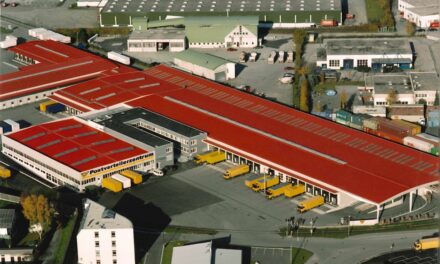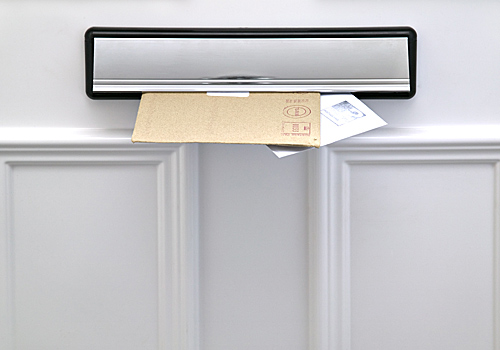
Resurgent parcels division leads profit growth at Austria Post
Austria Post achieved a 48.5% increase in profits after tax last year, with continuing declines in letter mail volumes “more than compensated” by parcels and logistics growth. Reporting on its financial performance for the whole of 2010 today, the company said the year had developed “satisfactorily”.
Overall, revenues dropped 0.2% while earnings before tax, interest and depreciation dropped 2.6%, although taking into account a change in accounting procedures regarding pre-paid telephone cards, the company said that on a comparable basis with last year it had seen a slight growth in revenues, of 0.3% to 2.3bn euros for 2010.
This has seen the company’s board satisfied that it has returned to a growth path “earlier than expected” after the economic slowdown.
Overall, a 0.5% drop in revenues in the mail division was countered by a 4.4% growth in parcel revenues, and coupled with cost-saving efforts allowed Austria Post to propose a 1.60 euro dividend per share, up 6.7% on last year’s dividend.
For 2011, the Austria Post board is expecting continuing trends for electronic substitution of letter mail, leading to a 3-5% decline in letter mail volumes, while it said parcel and logistics operations are set to see growth above 6% this year.
Austria Post is expecting to make around 80-90m euros in capital investments this year, mainly in upgrading existing facilities and bringing online new and efficient sorting facilities. No major acquisitions are expected to be made this year as the company settles on an overall revenue growth of around 1-2% during 2011.
And, the company is restructuring with a merging of its mail and retail divisions under a single director, the current mail division director Walter Hitziger from December 2011.
Commenting on the results today, Austrian Post CEO Georg Pölzl said: “In continuing to pursue our current business strategy, we will do everything in our power to compensate for the downward pressure on revenue resulting from electronic substitution in letter mail by achieving growth in other business areas.
“On balance, we are aiming to achieve a revenue growth of between 1% and 2% in 2011, and the EBITDA margin should be at the upper end of our targeted range of 10% to 12%,” Pölzl added.
Mail Division
Austria Post was satisfied that mail revenues declined by only 0.5% during 2010, as electronic substitution of letters continued along with a drop in high value mail items.
The 2.5% drop in letter mail revenues came along with cut-backs in the public sector and e-substitution in the financial and telecommunications sectors.
This letter mail decline was balanced by growth in advertising mail, where revenues grew 1.8%, partly thanks to an extra working day during the year, various elections and an improvement in the mail order business. However, a volume increase in advertising mail was coupled with a decrease in average weight.
Parcel & Logistics
As other European operators have found this year, the considerable growth in the parcels segment has been tempered by the competitive nature of the market, with Austria Post reporting that the pricing situation for parcels remained “tense” in 2010.
Nevertheless, the company achieved an overall 4.4% growth in revenues, to 802m euros, during 2010, with some success in attracting new customers.
The board noted that the parcels and logistics division had achieved a complete turnaround in profitability, with earnings before interest and tax up to 10.5m euros in 2009, compared to the 9.3m euro drop the previous year.
Express parcels, grew revenues by 1% to 630.5m euros, although this figure was hit to some extent by the termination of unprofitable transport logistics operations during the year. Despite a difficult pricing situation, growth came thanks to an 8.5% volume increase in Germany, which accounts for three quarters of Austria Post’s premium parcels revenue through its subsidiary Trans-O-Flex.
Austria Post’s standard parcels segment saw considerable growth in Austria, where revenues grew 19.5% to 160.8m euros, partly thanks to increase in mail order business and shift of volumes from premium to standard services.
Cost-cutting
Austria Post has been able to ride out some of the decline in its mail volumes thanks to the growth in parcels – but also through restructuring and reducing its work force.
A 31.7m euro decrease in the company’s retail sales in its post office network during 2010 was more than made up by a 34.7m reduction in costs as the company sold off a number of its branches.
Austria Post is currently going through a major organization restructuring, converting “unprofitable” company-owned branches into partner-operated facilities. While cutting costs, it has increased the number of points of sale from 1,552 to 1,850 outlets, although 1,117 of these are now operated by partners, up from 418 at the beginning of 2010.
As it continues to reduce its retail assets, Austria Post revealed this week that it will now be merging its retail sector with its mail division. From December 2011, mail division director Walter Hitziger will take over retail responsibilities from Herbert Götz.
While restructuring, Austria Post has also cut its staff wages bill in 2010, with staff costs accounting for around 50% of its total costs of 1.1bn for the year. Employee numbers were reduced through mainly attrition by 952 to 24,969 overall, while cost-cutting has been helped by the new collective wage agreement that came into affect in August 2009.
Austria Post said the decline in staff numbers had occurred in all divisions except the high growth parcel and logistics division.















